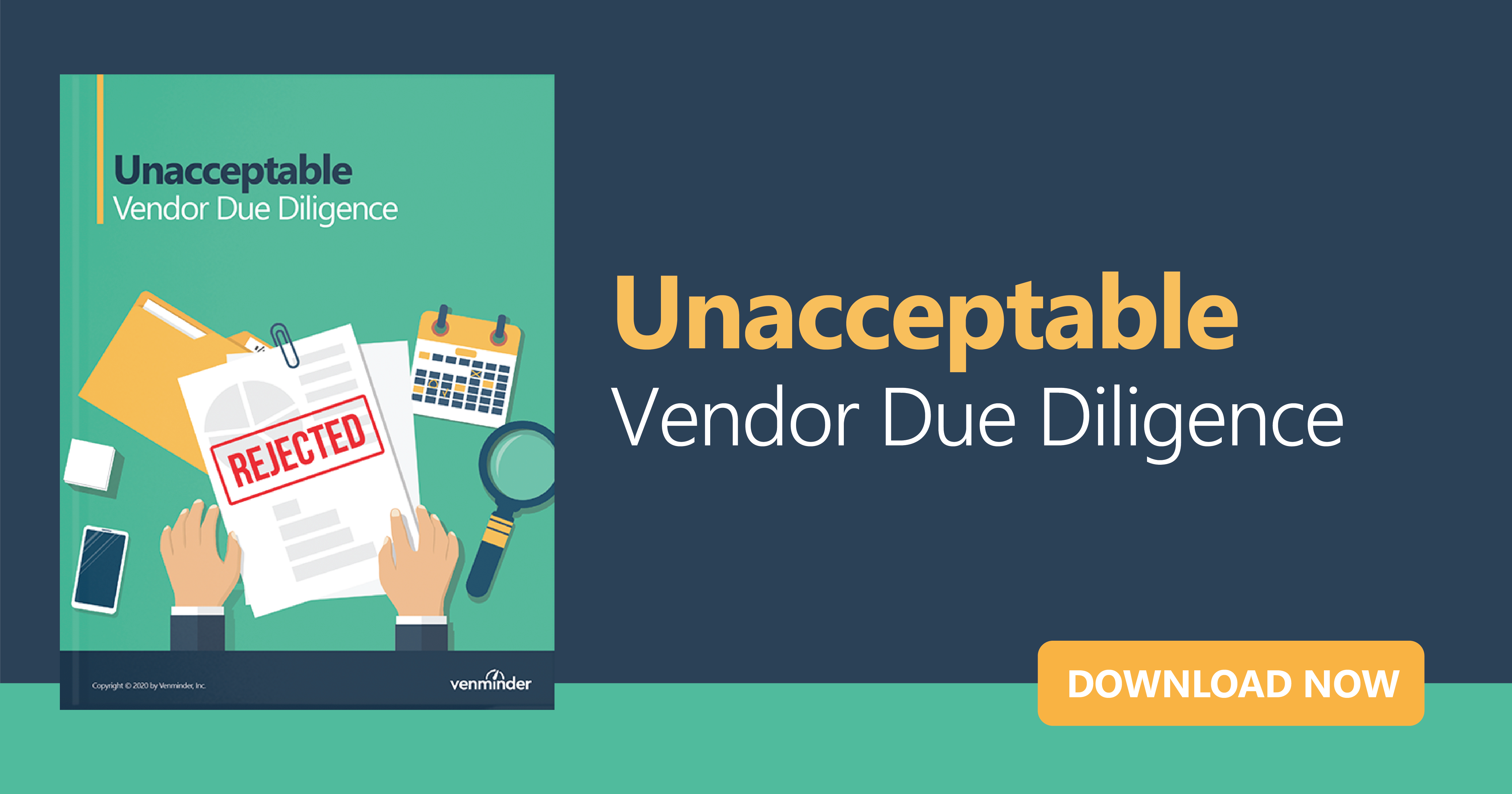Are you letting vendors rate themselves and stopping at that? Do you consider that to be your risk assessment on that vendor?
During the vendor risk assessment process, it’s a common practice to utilize questionnaires. Organizations will either fill it out on a vendor or ask the vendor to fill it out and rate themselves. If you have a vendor fill it out, some organizations are just receiving it and stopping there – they’re considering their vendor to be rated and the risk assessment to be complete. That’s simply incorrect, extremely risky, and certainly not consistent with regulatory expectations.
There’s an old saying in the compliance world: you can outsource nearly every function and process in the company, but you cannot outsource the responsibility for compliance. Simply put, you should never allow your third party to assign its own rating and accept their self-rating, at face value, without critical review. That is not a proper risk assessment, you’re only part of the way there.
Let’s face it, that’s letting the fox guard the henhouse. Of course, it’s expected that vendors will hold themselves in high regard. They should, after all, take pride in their work, just like we all hopefully do! However, it’s important that we ensure we remain vigilant while vetting our vendor ratings.
Here are three big reasons you must take an additional step and assess questionnaire responses that you receive back from vendors to make sure gaps aren’t overlooked:
1. Follow-Up and Clarification May Be Needed
Whether you have them fill out a questionnaire (or even help to fill out a portion of the vendor risk assessment) the onus is still on you as the compliance officer or third-party risk manager (or subject matter experts from around your organization) to review and affirm the responses – or challenge them when necessary. You’ll find times where you need to go back to a vendor to clarify and confirm items. However, if you’d simply accepted that item without review, you wouldn’t have the opportunity to ask for further clarification around things such as:
- An on-site visit to confirm what they have stated
- Proof of professional certifications or licenses to ensure they are up-to-date and issued in the appropriate state or locale
- Additional due diligence
2. Examiners and Auditors Expect to See a Thorough Analysis
Let’s flash forward to an audit or exam scenario. Suppose the examiner asks for an explanation of a rating. In a situation like this, you’re going to have a difficult time justifying or explaining a rating you’re not familiar with – especially if you’re reviewing the rating critically for the first time and happen to find something disagreeable with the vendor’s self-assigned rating. This is where the documentation and requested information from a follow-up will make sure you’re well-prepared and have evidence for any specific questions or concerns. You may even want to put specific requirements in the contract in order to obtain them post signing.
3. Vendor Communication Should Be Kept Open
Throughout, it’s critically important to work closely with your vendors. While I understand from firsthand experience that it can be a real juggling act, it’s important not to remove yourself from the review cycle. You need to ensure you have the final say in a rating and understand the basis of the analysis. We love and hopefully trust our vendors, but it’s important we continue an ongoing dialogue with them should potential issues arise.
After you review those questionnaire responses and ratings, continue on with the vendor risk assessment process. So, that means you must analyze the vendor’s responses and determine the inherent risk present by doing business with the vendor as well as measures that you can put into place to strengthen controls and mitigate the inherent risk. This will give you your residual risk – the risk left after you put additional controls in place.
And, as you do this, further follow up may be needed to help clarify why the vendor answered a question the way that they did. For example, after reviewing a response, you may realize that you need the vendor to send over additional due diligence for you to review and assess, such as a SOC report or their financial statement.
In addition, as you continue your risk assessment process, you’re determining the vendor’s business impact risk, so if they’re critical or non-critical to your organization, as well as their regulatory risk, which is their final overall risk rating. You, the organization using the third party for services, must determine the final criticality and rating, not the third-party vendor.
If you allow vendors to rate themselves, you’ll miss out on critical opportunities to prevent or mitigate potential risk posed to your organization.
Do you know what is considered as unacceptable vendor due diligence? Download the eBook.



















